
City tour in Yerevan. Trip to the pagan temple of Garni and the Christian monastery in Geghard. Excursion to Echmiadzin. Visiting Lori region, trips to the Dilijan and Ashtarak towns. Direction to the ancient Observatory of Karahunj.
Visiting the Memorial in Tsitsernakaberd dedicated to the victims of the Genocide in 1915. Seeing the Holocost memorial in the centre of Yerevan.
Visiting Matenadaran – depository of ancient manuscripts guarded by the statue of primordial alphabet - giver St. Mashtots. There are conservation room for the 17000 manuscripts in dozen languages.
Excursion to Erebuni fortress, founded by Argishti I King of Urartu in 782 BC, and Erebuni museum which is housed in the ancient citadel of Erebuni, the predecessor of the present-day Yerevan. Its display includes bronze and iron tools, earthenware, weapons, ornaments and other articles made by Urartu craftsmen. All these have been discovered during excavations of the ancient town-fortress.
Visiting State History Museum in Republic Square. The important archaeological collection from Stone Age through Medieval periods are shown there. One should note a Latin inscription from Ejmiatsin attesting to the presence of a Roman garrison. There are some interesting models of early modern Yerevan and other historical exhibits.
Visiting the traditional Armenian market. Free time for shopping.
Visiting the Hellenistic fortress of Garni, which has a different charm in each new season. The Greco-Roman-style temple was build around 77 AD under King Trdat I. This is the only architectural monument saved up to our days from Hellenistic period. The Temple is dedicated to the God of Sun Mher. It collapsed from the earthquake in 1679 and was reconstructed in 1970-s.
Route towards Geghardavank, a supremely beautiful architectural monument built in the 13th century. “Geghard” means a “spear-headed metal object” in Armenian, housed in Geghard, with which Christ was wounded in the side. Now it is saved in the Ejmiatsin treasury.
Trip to wonderful resort-town Tsaghkadzor, founded in 1049, called Darachichak in Persian times. “Tsaghkadzor” means “valley of flowers” in Armenian. Visiting Kecharis, founded early in the 11c. by Grigor Pahlavuni. Kecharis was considerd to be a spiritual and cultural center.
Back to Yerevan.
Pilgrimage to Holy Ejmiatsin – the first officialChristianChurchin the world and the seat of the Supreme Patriarch – Catholicos of all Armenians. Excursions to the ancienttempleofSt. Hripsime. Tour around Ejmiatsin town, visiting the Cathedral – religious center of all Armenians, and theCathedralMuseum. On the back way observing the ruins of Zvartnots (7th c.). The temple collapsed from the earthquake in the 10th c.
Returning toYerevan.
Free time for shopping at Vernisage – a place where one can buy Armenian souvenirs.
Visiting Vanadzor on the way – the administrative center of Lori region.
Visiting Haghpat and Sanahin architectural monuments (10th-13th centuries), truly considered to be the jewels of medieval Armenian architecture preserved by UNESCO and included in the World Heritage list. Both were founded by Queen Khosrovanush around 976. Haghpat and Sanahin were major literary centers in the Middle Ages.
Accommodation in a hotel. Overnight in Lori.
Route towards Dilijan and Sevan.
Trip to Haghartsin. Visiting Haghartsin (11th c.), one of the most beautiful monuments of medieval architecture. There is an ancient nut tree nearby (said to be 1000 years old), shading a fine viewpoint of various remains of graves with typical Armenian ornaments, including “royal” graves of the Bagratuni family. There is a belief that one can have his dreams come true by passing through a huge hole right in the famous tree.
Trip to the monastery of Goshavank (Nor Getik), founded on the right bank of the river Getik in 1188 by the renowned Armenian scholar, jurist and fabulist, Mkhitar Gosh. Many beautiful khachkars have been preserved in Goshavank. The ones created by the sculptor Poghos stand out among the rest.
Trip to famous Lake Sevan (1900m above see level), that enters recorded history with the Urartians. King Rusa I conquered Sevan basin and made it the eastern frontier of the kingdom of Urartu sometime around the 720 BC. A number of boundary markers of Artashes I written in Aramaic, the Middle Eastern lingua franca, show the presence of the Artashesid dynasty in Hellenistic times. In the medieval times, Gegharkunik was dominated by the Dopian clan. Visiting Sevanavank, a construction, sponsored by Princess Mariam Bagratuni, which is a vivid example of an important religious regional school, under the guidance of the future Armenian Catholikos Mashtots Ervandatsi.
Accommodation in a hotel.
Overnight at Sevan.
Trip towards Jermuk. On the way visiting Selim Caravan-saray, which lies below the road just before the summit on the South side of Selim Pass, a splendid relic of the days when an international trade route connected Vayots Dzor to the Sevan basin and points of North. It is the best preserved caravan-saray in Armenia. Selim is built of basalt blocks, with a cavernous central hall for animals separated from the two vaulted side aisles by rows of stone mangers.
Tour to Jermuk, named for the hot springs (up to 65 C), source of the famous fizzy water. There is a picturesque waterfall, interesting walks and the possibility of a cure of most human ailments at one of the many sanatoriums. Visiting the drinking gallery, hiking to the waterfall. Accommodation in the hotel.
Overnight in Jermuk.
It is considered to be 7500 years old, which makes Karahunj more ancient than its British analogy Stonehenge, reckoned 5000 years old.
Returning to Yerevan. On the way visiting famous Monastery complex of Noravank, situated on a ledge of a deep winding gorge of a tributary of the Arpa River near the village of Amaghu, Yeghegnadzor District. Noravank ensemble stands amidst the bizarre-shaped precipitous red cliffs. Built in place of an ancient cloister, it grew in the reign of Princes Orbelian of Syunik. In the 13th-14th centuries it became a residence of Syunik's bishops and, consequently, a major religious and, later, cultural center of Armenia closely connected with many of the local seats of learning, primarily with Gladzor’s famed university and library. Visiting the remains of the Gladzor University, famous medieval depository of manuscripts.
There are photographs and maps charting the existence of educational institutions in Armenia and the influence of Gladzor and its pupils on the whole educational system in Armenia. Outside the door are seven modern khachqars, representing the trivium and quadrivium, the 7 branches of medieval learning (grammar, rhetoric, and dialectic – the disciplines of the "trivium", and arithmetic, geometry, astronomy and music – the disciplines of the "quadrivium").
Route to Yerevan.
Route towards Ashtarak town. “Ashtarak” means “Tower” in Armenian. It is endowed with many historical, architectural and religious monuments (Karmravor, Tsiranavor, Saghmosavank). Visiting Amberd fortress. Amberd is occupying a rugged promontory between the Amberd river and its main tributary. The fortress reached its zenith as the seat of the Pahlavuni feudal family in the 11th c.
Visiting burial site of Mesrop Mashtots at Oshakan. South from Ashtarak is Oshakan, which is most famous as the resting place of the creator of the Armenian alphabet Mesrop Mashtots. The first phrase ever written in Armenian using Mashtots alphabet was the one translated from the Old Testament. Visiting burial site of Mesrop Mashtots at Oshakan.
Back to Yerevan.
Excursion to the museum of Sergey Parajanov. In 1988, the Government of Armenia presented to Parajanov a separate building to serve as his house and museum. The construction of the building was interrupted due to the earthquake, and the museum opened after the death of the master in 1991. The museum contains more than 200 various works of the artist as well as items of a Tiflis house. The majority of the items were exhibited in many countries of the world - in Italy, Japan, China, Greece, France, Germany, and Russia.
Excursion to the The National Gallery of Armenia, founded in 1921 as a State Section of Arts in Armenia on the basis of an exhibition of paintings by Armenian painters held that year. In 1935 the Arts Section became the State Museum of Fine Arts and later, in 1947 it was renamed as the Armenian National gallery. Since 1992 it is the National Gallery of Armenia.
It has a huge collection of Armenian, Russian and European works, some of the latter copies or else spoils of World War II divided among the various Soviet republics.
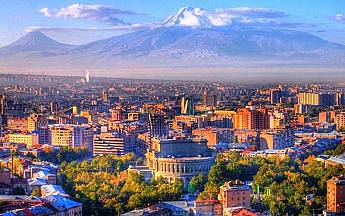
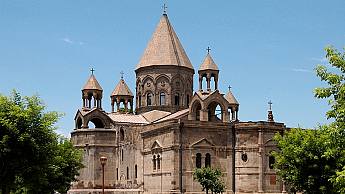

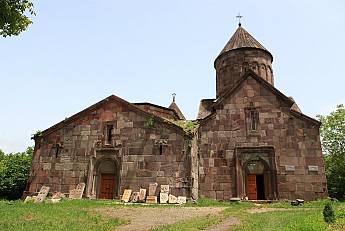
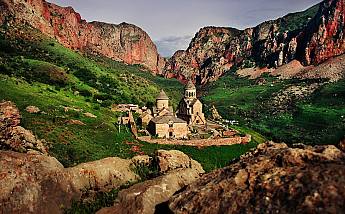
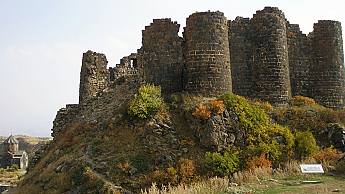
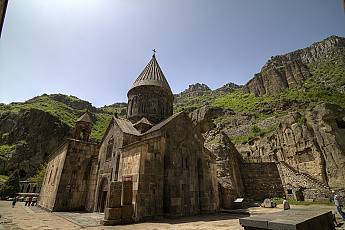
Leave a feedback:
Thank You for Your feedback:
Error feedback: